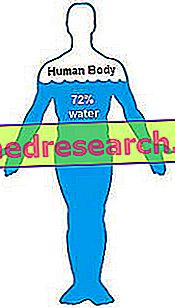
What is Fertavid?
Fertavid is a solution for injection containing the active substance follitropin beta.
The medicine is similar to Puregon, already authorized in the European Union (EU). The company that made Puregon agreed that the scientific data relating to it were also used for Fertavid.
What is Fertavid used for?
Fertavid is used for the treatment of infertility in women in the following cases:
- women with anovulation (ie where ovulation is absent) who do not respond to treatment with clomiphene citrate (another medicine that stimulates ovulation).
- women undergoing fertility treatment (assisted reproduction techniques, such as in vitro fertilization). The administration of Fertavid serves to stimulate the ovaries to produce more than one egg at a time.
Fertavid can also be used in humans to stimulate sperm production in the presence of hypogonadotropic hypogonadism (a rare hormonal deficiency disease).
Fertavid can only be obtained with a prescription.
How is Fertavid used?
Fertavid treatment should be performed by a doctor who has experience in treating fertility problems. Fertavid is given as a 'subcutaneous' (under the skin) or intramuscular injection. Injections can be performed by the patient or by their relative. Fertavid should be administered by individuals who have received instructions from their doctor or who have access to expert advice. The dosage and frequency of administration of Fertavid depend on its use (see above) and the patient's response to treatment. For a complete description of the doses, see the package leaflet.
How does Fertavid work?
The active ingredient in Fertavid, follitropin beta, is a copy of the natural hormone FSH (follicle-stimulating hormone). In the body, FSH regulates reproductive function: in women it stimulates the production of eggs and in men it stimulates the production of sperm by the testicles. In the past, FSH used as a medicine was extracted from urine. The follitropin beta present in Fertavid is produced by a method known as "recombinant DNA technology": that is, it is obtained from a cell in which a gene (DNA) has been introduced which makes it capable of producing human FSH.
How has Fertavid been studied?
The use of Fertavid in women undergoing fertility treatment was studied in 981 patients. The main criteria for measuring efficacy were the number of eggs recovered and the rate of evolutionary pregnancies. Fertavid has been studied in 172 anovulatory women to determine how many treatment cycles were needed to determine ovulation in these patients. In humans, Fertavid has been studied to determine its effect on sperm production in 49 patients. In all the studies Fertavid was compared to the natural hormone FSH extracted from urine.
What benefit has Fertavid shown during the studies?
Fertavid was as effective as the comparison product in all studies. Fertavid was as effective as urinary FSH as a fertility treatment in ovulation and sperm production.
What is the risk associated with Fertavid?
The most commonly reported side effects of Fertavid are reaction and pain at the injection site. In 4% of women treated with Fertavid in clinical studies, signs and symptoms of ovarian hyperstimulation syndrome (eg, feeling of nausea, increased body weight and diarrhea) have been reported. Ovarian hyperstimulation syndrome occurs in cases of over-treatment of ovaries. Physicians and patients should be aware of this possibility. For the full list of all side effects reported with Fertavid, see the Package Leaflet.
Fertavid should not be used in people who may be hypersensitive (allergic) to follitropin beta or any of the other ingredients. Fertavid should not be used in patients with ovarian, breast, uterine, testicular, pituitary, or hypothalamus tumors. It must not be used in men with testicular failure. In women, it should not be used in the presence of ovarian failure, increased ovarian volume or the presence of cysts not due to polycystic ovarian disease, or vaginal bleeding. For the complete list of usage restrictions, see the package leaflet.
Why has Fertavid been approved?
The Committee for Medicinal Products for Human Use (CHMP) decided that Fertavid's benefits outweigh its risks in women for the treatment of infertility, and in men for the spermatogenesis deficiency due to hypogonadotropic hypogonadism. The committee recommended that Fertavid be given marketing authorization.
More information on Fertavid:
On 19 March 2009, the European Commission granted a valid EU-wide marketing authorization for Fertavid to SP Europe.
The full EPAR for Fertavid can be found here.
Last update of this summary: 01-2009.



